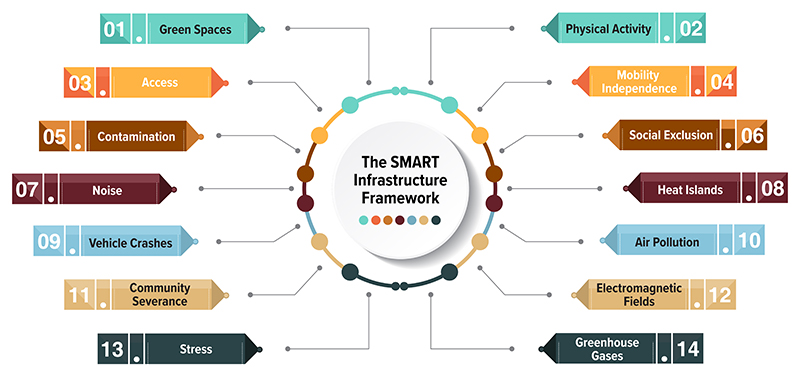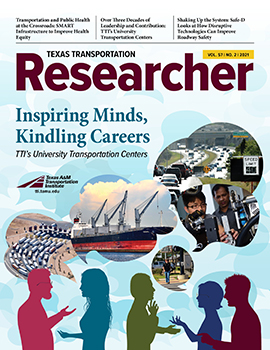The COVID-19 pandemic has disrupted the world, including how we view our transportation system. But that interruption in “the way we’ve always done things” has also provided us an unprecedented opportunity to take a step back and reassess our habits, systems and interactions to achieve healthier outcomes. One strategy to do so demands that transportation planners and health professionals work together to develop future infrastructure aimed at reducing health disparities and advancing health equity.

The Center for Advancing Research in Transportation Emissions, Energy, and Health (CARTEEH) — a Tier-1 center funded by the U.S. Department of Transportation’s Office Research and Technology under the University Transportation Center Program — recently launched the SMART Infrastructure to Improve Health Equity initiative with the goal of improving overall public health. The initiative pulls together the strengths of CARTEEH’s consortium members — the Texas A&M Transportation Institute (TTI), Johns Hopkins University, the Georgia Institute of Technology, The University of Texas at El Paso, and the University of California, Riverside — and leverages previous research efforts. Led by TTI Assistant Agency Director Joe Zietsman, CARTEEH is developing a framework designed to provide stakeholders with a range of tools to enhance the public health and equity outcomes related to infrastructure decisions.
“We’re excited about the opportunity to continue advancing research on the impact of infrastructure decisions on human health,” says Zietsman. “The more we’re able to bring together experts from two disciplines that have not traditionally worked together (engineers and health professionals), the more progress we can make toward improving the nation’s health.”

The SMART Infrastructure Framework draws on CARTEEH’s work to identify the linkages between health and transportation. CARTEEH identified 14 such linkages, or pathways. They include green spaces, physical activity, access, mobility independence, contamination, social exclusion, noise, heat islands, vehicle crashes, air pollution, community severance, electromagnetic fields, stress and greenhouse gases. The framework also defines goals for the SMART component of the concept, namely:
- Sustainable: embracing the triple bottom line or three dimensions of sustainability (economic, social and environmental), now and into the future.
- Multimodal: diversifying transportation modes to allow for choices between modes.
- Accessible: facilitating access to destinations, activities and people.
- Resilient: emphasizing recoverability from a stressed situation.
- Technological: innovating the tools, methods and machines used to solve transportation problems.
As can be seen from the 14 pathways, transportation has both beneficial (e.g., physical activity) and detrimental (e.g., air pollution) impacts on health. Center researchers recently conceptualized and quantified the 14 pathways. This pathway model creates a critical framework for linking health outcomes to infrastructure decisions.
“We believe the SMART framework and associated tools will help advance the research efforts of the transportation-related objectives laid out by the federal government in the years to come,” says TTI Associate Research Scientist Ben Ettelman, who developed the framework.
Researchers are developing a Transportation Health Enhancement Toolkit as part of the SMART initiative. The toolkit is based on several pilot projects currently being undertaken by TTI and its CARTEEH partners. These projects cover all stages of the transportation infrastructure life cycle, including planning, project development, construction, operations, maintenance and end of life/disposal. The tools will include performance measures, methods and models, and case studies for transportation practitioners implementing transportation infrastructure improvements, so they’re both SMART and healthy.
“The pandemic has certainly advanced health to the forefront of the world’s agenda,” Zietsman notes. “We’re hopeful that CARTEEH’s SMART Infrastructure to Improve Health Equity initiative is an important step in the right direction for providing transportation infrastructure that supports and enhances healthy outcomes in an equitable way across the nation — and, eventually, our global community at large.”

